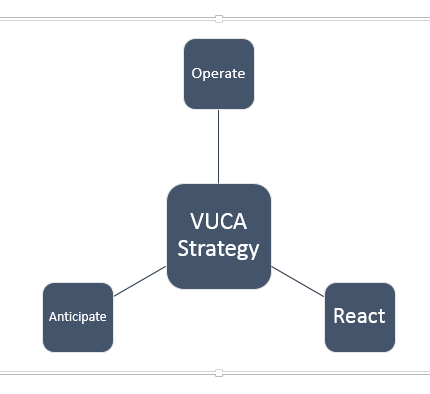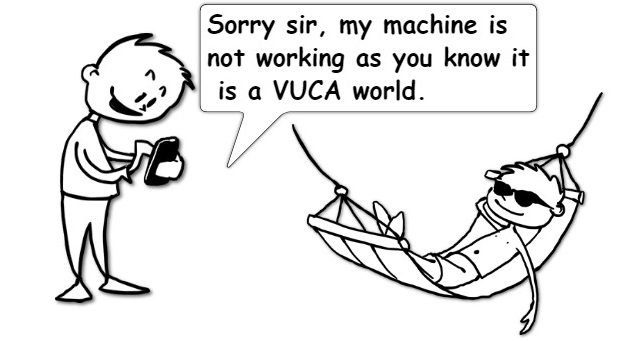VUCA stands for volatility, uncertainty, complexity and ambiguity, a term popularized by the American army in their activities in places like Afghanistan and Iraq. For strategic leadership, an ever changing world would seem like the norm in this age of disruptive technologies and the consistently evolving landscape of operations. VUCA as a framework would thus aid organisation management on how to lead in a volatile, uncertain, complex and ambiguous world, hence the VUCA world, whilst others will add an extra C (Chaotic) to make it the VUCCA world.
Our world is a revolving systematic paradox of different variables which are always changing in their nature or presentation. Strategic management is about enabling organisation to meet its strategic objectives in any environment whether turbulent or calm. In most cases management is not prepared for turbulent waters as the calmness of strategy assumes that most things will be even, that the markets will respond to specific inputs, and that frameworks will be the same and the similar historical economic performances will be dealt with as before.
It is only after seeing the volatility of markets that one can see the incredible rise and fall of giants such as Blockbuster and Nokia. Blockbuster in particular lost 500,000 subscribers in a quarter in one year (2007) as competition such as Netflix took over the markets with their disruptive ideas. One thing is for sure business is no longer a calm sea but a VUCA world.
Understanding the VUCA world
In order to understand the VUCA world around the business environment it is best to ask a few leading questions
| Volatility |
|
| Uncertainty |
|
| Complexity |
|
| Ambigous |
|
VUCA Strategic Management
Think of Strategy Management as a way to steer the ship to meet its destination. On the seas it can be calm and sometimes waters can change. The Captain in this case the CEO needs to know how to keep the ship going towards its destination.
There are different ways that a CEO can approach business management which can be summarized in the diagram below

As much as you want to achieve a business vision it is important that you are cognizant of the following three.
Operations
Whatever a business is into, it it must equip itself with the right capabilities to ensure that it operates sufficiently to meet the needs of a client or customer. As a strategic leader this means ensuring that there is business continuity no matter the situation at hand. A client does not need to be told that a business is not operating because “As you can see this is a VUCA environment”, all they are looking for is a solution. So whether there has been volatility, uncertainty, complexity and ambiguity, they want their product which is the value exchange they have requested for. Business is the provision of a solution.
Anticipate
“Risk can never be eliminated” but it is not an excuse for not delivering service. So once more, we can not tell our clients that “As you understand very well, risk cannot be eliminated in a VUCA world” A strategic leader has an element of anticipation in their business. This means that the business must be structured well enough to be able to deal with the different situations that will arise. Sometimes it is not about having a contingency plan for everything but knowing how to deal with a problem to create a contingency plan. Having capacity to function in a VUCA or VUCCA environment is more than just paperwork but having the right structures.
React
When you are emotional about everything you might be emotional about petty things and make big decisions. In the VUCA world things will happen but knowing what to do is key without reacting in such a way that you compromise an entire strategy simply by the wrong reaction to a VUCA element.






















+ There are no comments
Add yours